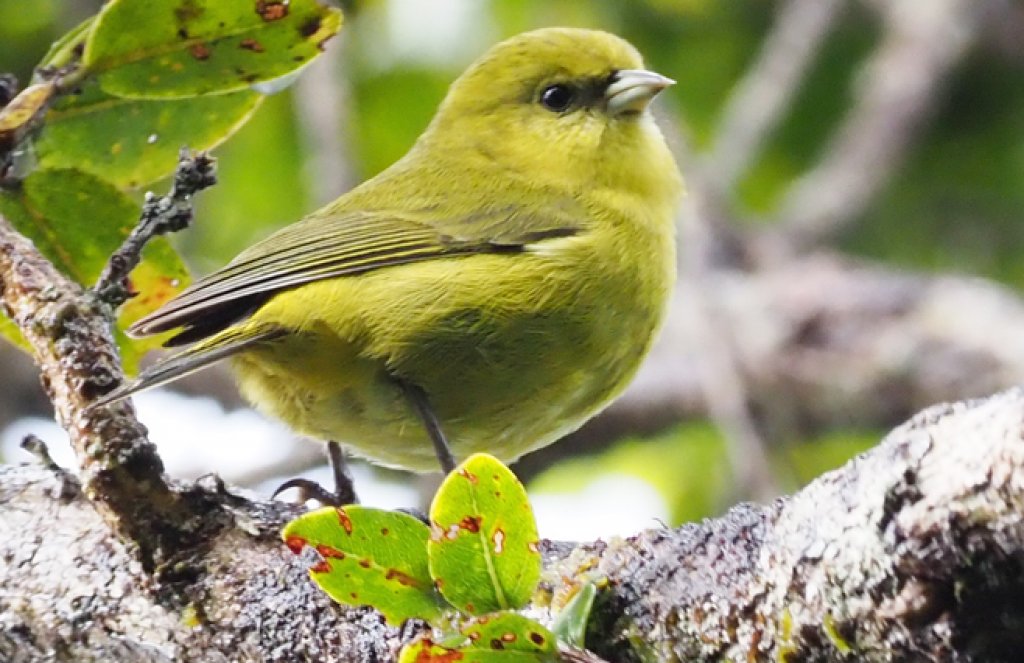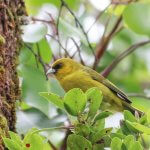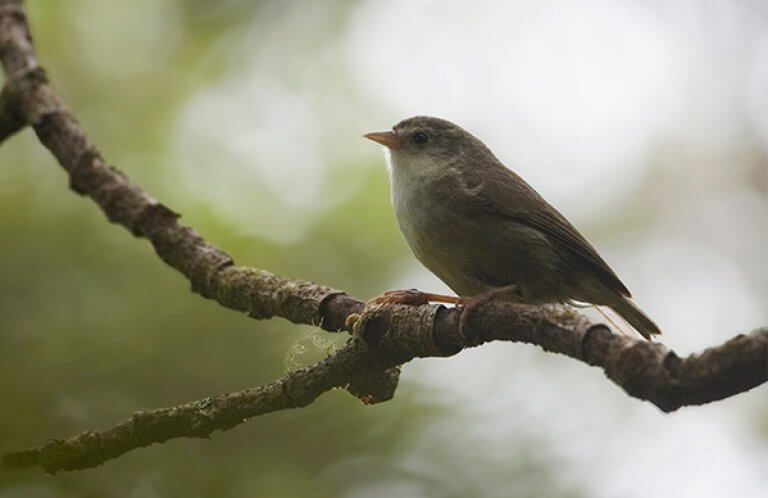About the ‘Akeke‘e
The ‘Akeke‘e, a small greenish-yellow Hawaiian honeycreeper with a blackish mask, is named for its asymmetric bill. Its name likely derives from the Hawaiian word ke‘e, meaning "crooked" or "bent." Its genus name Loxops derives from the Greek for "twisted face," again referring to the crossed bill.
The ‘Akeke‘e is like many other honeycreepers, such as ‘I‘iwi and Kiwikiu (Maui Parrotbill), in having a specialized bill that shows an incredible adaptive radiation from closely-related species.
The Crossbill Connection
The ‘Akeke‘e's specialized bill, with offset tips similar to those of crossbills, allows this bird to pry open the buds of the leaves and flowers of native trees called ‘ōhi‘a. There, the ‘Akeke‘e finds hidden prey, including spiders, caterpillars, and other arboreal arthropods.
Songs and Sounds
The ‘Akeke‘e's song is a quick, high-pitched trill, heard throughout the year. Like other Hawaiian forest birds, it tends to sing throughout the day, particularly during cool, foggy periods. Its short call has a finch-like quality.
Listen here:
Breeding and Feeding
Mysterious Mating Rituals
‘Akeke‘e pairs build open-cup nests of mosses in the uppermost branches of ‘ōhi‘a trees. The male defends a small territory around the immediate vicinity of the nest, chasing away other species of Hawaiian honeycreepers, which may try to steal nesting material for their own nests.
The breeding season begins in March, and chicks probably fledge by mid-July. There is still much to be learned about ‘Akeke‘e biology; scientists suspect that chick care is similar to that of the closely related Hawai‘i ‘Ākepa, in which young birds feed with parents in family groups, or in mixed-species flocks, for several months after fledging.
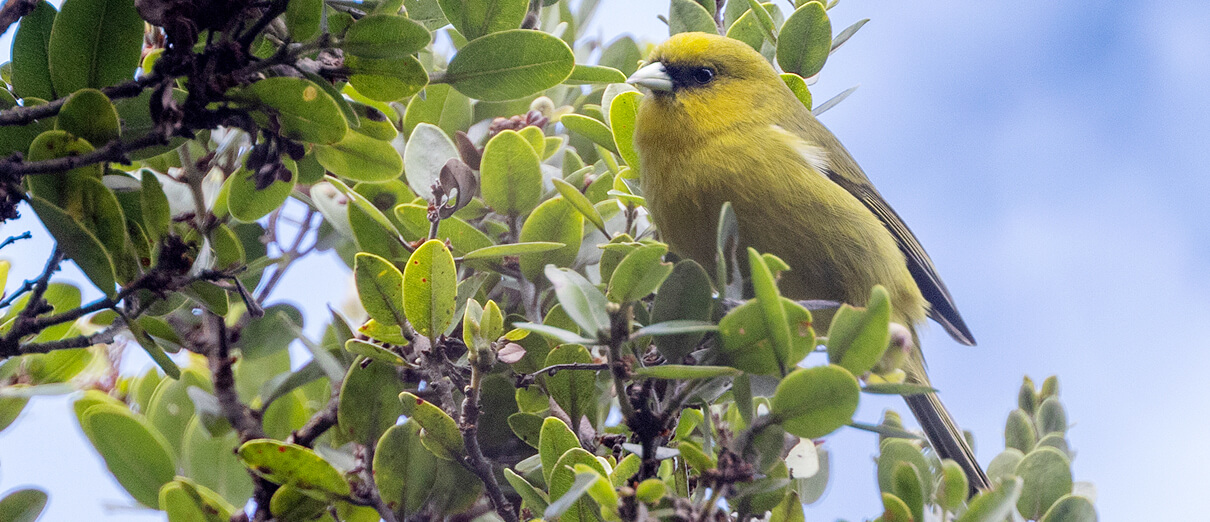
‘Akeke‘e likely build multiple nests in a season; most honeycreeper species re-nest after a failed nesting attempt. The species can be hard to census because the birds range widely across the remote landscape where the last populations remain.
Telltale Feeding
‘Akeke‘e mostly forage alone or in pairs, probing through ‘ōhi‘a leaf clusters with characteristic quick, deliberate movements, behavior that can help identify the species from quite a distance. As described above, the bill is used to pry open buds as the birds gape, or keep their bills open. While prey hiding places are exposed this way, the bird's brush-like tongue is inserted to collect tiny invertebrates sheltering within. ‘Akeke‘e also occasionally feed on the nectar of some trees.
Region and Range

‘Akeke‘e are found only on the Hawaiian island of Kaua‘i, where they are confined to forests on the Alakaʻi Plateau above 3,600 feet – places formerly too cool for mosquitoes.. Unfortunately, the warming climate has allowed mosquito populations to move up into this last remaining high-elevation stronghold where they are now found year-round.
Conservation
Introduced species, particularly mosquitoes that carry avian malaria and pox, have decimated ‘Akeke‘e and other native birds, including the ‘Akikiki and ‘Apapane. Habitat loss and non-native rats (egg predators), cats and Barn Owls (which prey on adults), plus invasive plants also contributed to the ‘Akeke‘e's population crash. Rapid ‘Ōhi‘a Death, a fungal disease that kills this native tree so vital to many native honeycreepers, is another grave threat.
The ‘Akeke‘e was federally listed as Endangered in 2010 and is on the State of the Birds Watch List. The species has declined 98 percent over the last 25 years, and is projected to go extinct in 5-10 years (or even sooner), if urgent actions are not taken. In 2021, the population was estimated at just 638 individuals, with a small population in captivity. Unfortunately, to date, the birds have not bred well in captivity.
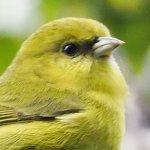
Help support ABC's conservation mission!
ABC is dedicated to the survival of the remaining Hawaiian honeycreepers and the islands' other endemic birds. As part of the Birds, Not Mosquitoes initiative, ABC works with partners on a large-scale effort aimed at curbing the islands' non-native mosquito populations. To do this, the partners are planning to deploy a naturally occurring bacteria as “birth control” to reduce mosquito numbers in high-altitude forest bird habitat across the islands.
ABC's Hawai‘i Program is working to protect remaining critical habitat for ‘Akeke‘e and other native Hawaiian forest birds along with partner groups including the Kaua‘i Forest Bird Recovery Project and the Hawai‘i Division of Forestry and Wildlife.
In June 2023, U.S. Secretary of the Interior Deb Haaland announced the commitment of nearly $16 million in federal funding to restore populations of dwindling endemic Hawaiian songbirds, under the Hawaiian Forest Bird Conservation Keystone Initiative. Among the actions to be funded: expanded captive care programs for the most at-risk species; work to control and eradicate invasive mosquitoes that spread avian malaria; and translocation of bird populations to higher elevations, beyond the reach of mosquitoes. Another goal is engagement in these efforts with Native Hawaiian cultural practitioners and experts.
In 2022, ABC and partners on Kauaʻi fought to reduce the impact of free-roaming cats on that island, supporting the introduction and passage of legislation prohibiting cat abandonment and feeding on county properties. ABC also helped defeat state legislation that would have resulted in more cats on the landscape.
Get Involved
Policies enacted by the U.S. Congress and federal agencies have a huge impact on Hawai'i's birds. You can help shape these rules for the better by telling lawmakers to prioritize birds, bird habitat, and bird-friendly measures. To get started, visit ABC's Action Center.
Our Hawaiian partners frequently need help with habitat restoration and other projects benefiting birds. If you live in or will be visiting Hawai'i and would like to volunteer, check the following Facebook accounts for opportunities: Kaua'i Forest Bird Recovery Project, Maui Forest Bird Recovery Project, and Mauna Kea Forest Restoration Project.
American Bird Conservancy and local partners are restoring forests, protecting critical habitat, and much more to save native Hawaiian birds. This is a monumental undertaking, requiring the support of many, and you can help by making a gift today.





































